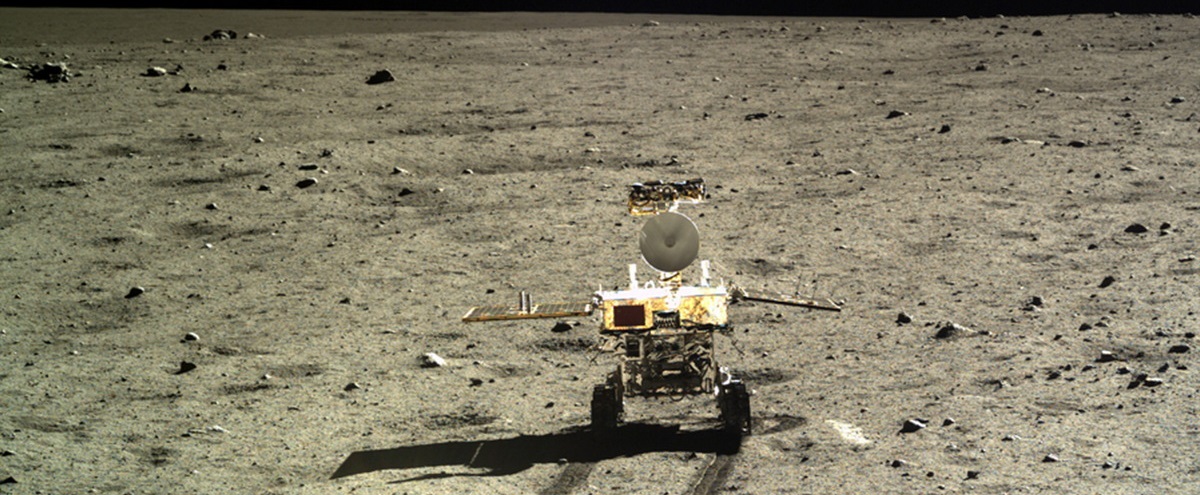Despite passing its design lifetime of three Earth months, China’s Chang’e-4 lunar rover Yutu-2 – the first man-made spacecraft launched to the far side of the moon – is doing well. Really well in fact as while it continues on its way west of its landing site in the Von Kármán Crater, the rover has made a strange discovery; a gel-like substance with an unusual colour.
The strange substance, found during lunar day 8 which started on July 25 (a lunar day is equal to 14 days on Earth) has prompted mission scientists to cancel other exploration plans for the rover and instead focus on studying the curious material to understand what it might be.
The substance was flagged up after mission team members, who were about to power down Yutu-2 for its usual midday ‘nap,’ spotted a small crater from images that the small rover had taken, that seemed to contain material with a colour and lustre unlike that of the surrounding lunar surface.
The rover was then sent back to examine the area further with its Visible and Near-Infrared Spectrometer (VNIS), which detects light that is scattered or reflected off minerals to identify their chemical makeup. VNIS has already helped the Chinese scientists detect what could be material that originally was hidden under the crust I.e. from the Moon’s mantle but it now scattered on the surface in the Von Kármán crater.
"Where they've landed was once the site where a big asteroid crashed into the moon, buried itself deep inside and melted all that part of the moon, and presumably brought interior material up near the surface," Auckland Astronomical Society president Grant Christie said earlier this year after the Chinese probe had landed.
No further information has been released by mission scientists regarding this latest discovery and they haven't shared an image of the weird material. Some not connected with the mission have said that the substance could be a melt glass created from meteorites that strike the moon, similar to that which created the 180 kilometre-wide Von Kármán Crater where the Chang’e-4 mission landed.
However as the substance has been described as gel-like, and glass is more rigid, the debate is still out on that one.
As of early August, the Yutu-2 rover had covered a total of 271 metres (890 feet) since its deployment and has been increasing its drive distance, driving 33.13 meters during lunar day 8, the farthest since the 43 meters it covered in lunar day 3.
Progress is relatively slow because not only is the rover solar powered, it ceases all operations and shuts down for six days in the middle of the 14-day period of sunshine. This is a precautionary measure to prevent damage from the overhead, direct solar radiation cast down over the landing site. The consequence of this though does mean that the rover only has just over three days either side of these prolonged ‘naps’ for exploration and science acquisition.
The Yutu-2 rover is now awake for its ninth lunar day, which began on 25 August, and is presumably conducting further scientific tests on its latest find. Its progress can be followed via the Yutu-2 “drive diary,” found here.











